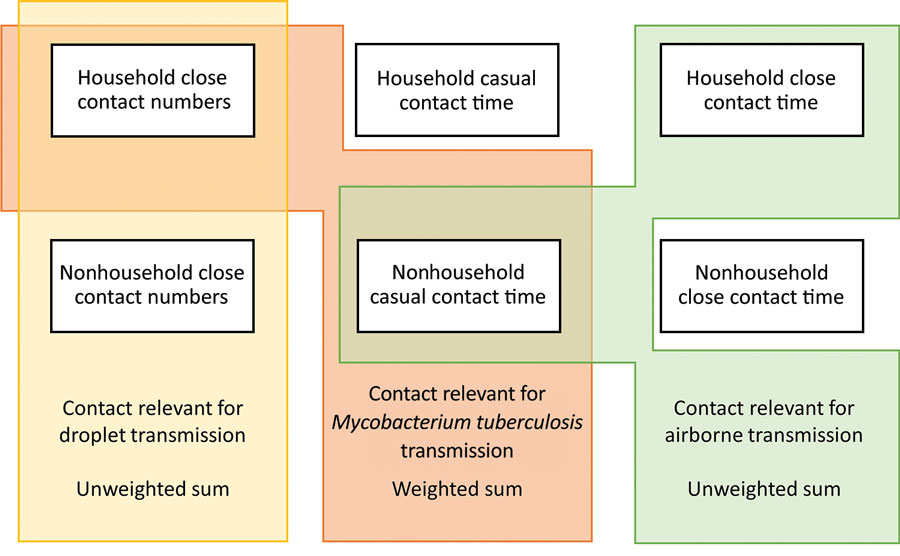Volume 28, Number 10—October 2022
Research
Improving Estimates of Social Contact Patterns for Airborne Transmission of Respiratory Pathogens
Figure 1

Figure 1. Summary of data used to estimate age-mixing matrices for a study of social contact patterns for airborne transmission of respiratory pathogens, KwaZulu Natal and Western Cape Provinces, South Africa, 2019. Diagram showing how age-mixing matrices relevant for the transmission of droplet infections, airborne infections, and Mycobacterium tuberculosis were estimated using empirical data on close contact numbers, close contact time, and casual contact time.
Page created: August 15, 2022
Page updated: September 20, 2022
Page reviewed: September 20, 2022
The conclusions, findings, and opinions expressed by authors contributing to this journal do not necessarily reflect the official position of the U.S. Department of Health and Human Services, the Public Health Service, the Centers for Disease Control and Prevention, or the authors' affiliated institutions. Use of trade names is for identification only and does not imply endorsement by any of the groups named above.